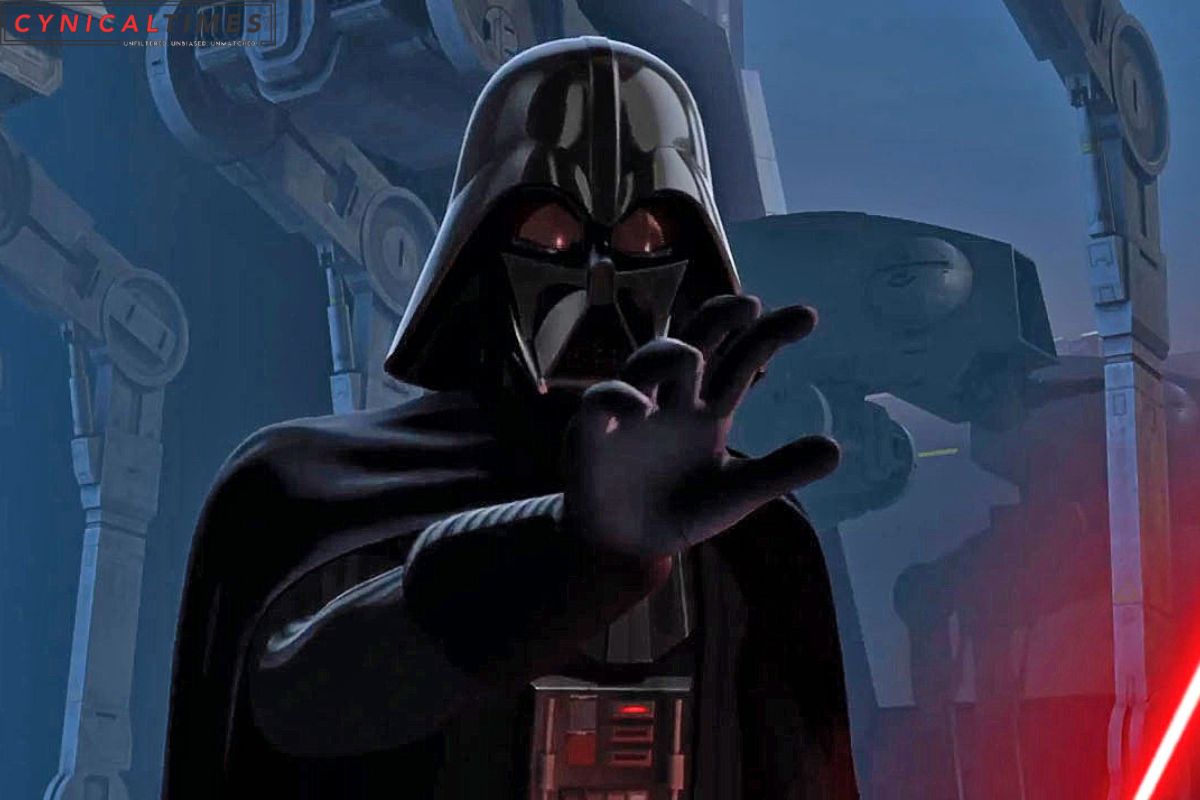Star Wars Rebels Evolution : In Season 2 of “Star Wars Rebels,” Darth Vader’s entrance brought a dimension of depth and gravitas to the Empire’s representation, which earlier episodes had struggled to capture. Throughout the series, the rebel Ghost Crew constantly battled the looming menace of the Empire. Yet, it was evident that the debut season’s Empire was somewhat diluted in its potency.
The Ghost Crew’s voyages across a galaxy overshadowed by the Empire are charted across the four seasons of the series. The dynamic between Jedi Kanan Jarrus, his Padawan Ezra Bridger, and the formidable Imperial foes, such as Darth Vader and the Inquisitors, forms the crux of the narrative. Yet, the Empire’s aura in the maiden season lacked the foreboding menace one would expect.
The rebels operated with almost surprising freedom in the first season. Episode 13, titled “Call to Action,” sees Grand Moff Tarkin consulting with the Imperial powers on Lothal, puzzled by the unchecked activities of the Ghost Crew. The Crew’s repeated evasion, especially on an Empire-held planet, irked Tarkin. The candid confession by Agent Kallus, an Imperial operative often on the rebel’s trail, of depleting Empire resources without nabbing the rebels, spoke volumes. Moreover, Tarkin’s critique of the Grand Inquisitor’s role in the Crew’s rise, especially concerning rumors of a Jedi leading the rebellion, was telling. This overt critique of the Empire’s shortcomings was a tacit acknowledgment of the series’ softer Empire portrayal.
Grand Moff Tarkin’s disparagement hinted at a reality: the Empire, particularly Kallus and the Grand Inquisitor, had been less than formidable adversaries. Their repeated failures diluted the Empire’s intimidating stature. The accompanying stormtroopers, often buffoonish rather than battle-hardened, further undermined the Empire’s menacing image. While the inaugural season meticulously sculpted the Ghost Crew’s personalities, the overarching conflict against the Empire seemed bereft of depth, owing to the lack of potent adversaries.


Read More : Rebel Moon Trailer Drop: Sofia Boutella Shines in Zack Snyders Interplanetary Epic on Netflix
Enter Darth Vader. His relentless pursuit of the Ghost Crew lent gravitas to the narrative, elevating the Empire’s stature. Season 2’s “The Siege of Lothal” episodes marked a narrative shift. Post the Grand Inquisitor’s demise, Vader’s Lothal arrival signaled heightened stakes. From annihilating rebel-allied settlements to framing the Ghost Crew for murder, Vader’s malevolent prowess was palpable. The climactic face-off with Kanan and Ezra highlighted Vader’s ruthless dominance.
Vader’s ascent as the central antagonist in Season 2 was pivotal, escalating the series’ stakes exponentially. Pre-Vader, the narrative limped in showcasing the Empire’s ruthlessness. Yet, Vader’s onslaught against the Ghost Crew epitomized the Empire’s clinical efficiency, setting a benchmark for subsequent villains. His siege redefined the series’ tone, aligning it with its rebellion-driven theme.
This evolution is testament to “Star Wars” unparalleled storytelling range, catering to diverse audiences across time. The narrative’s emotional depth remains a cornerstone, resonating with fans globally. One such poignant moment is “Order 66” from “Star Wars Episode III: Revenge of the Sith.” The orchestrated Jedi purge is deeply affecting, accentuated by directorial nuances suggested by Steven Spielberg, George Lucas’ confidant. Spielberg’s touch to Ki-Adi Mundi and Aayla Secura’s demises added layers of emotion, highlighting the Jedi Order’s tragic end.
“Revenge of the Sith” evokes a gamut of emotions, from the thrilling Anakin-Obi-Wan duel to the tragic Order 66 sequence. This balance between drama and action underscores the franchise’s appeal. Spielberg’s subtle cinematic additions, enhancing the emotional depth of scenes, exemplify the essence of “Star Wars”: raw, gripping emotion. It’s moments like these that keep the legacy of “Star Wars” alive and revered, even decades later.
Our Reader’s Queries
Why is Zeb not in Ahsoka?
It’s likely that Zeb is currently spending his time on the planet Adelphi or carrying out missions for the New Republic, while Ahsoka, Hera, and Sabine are engaged in a confrontation with Thrawn. In his recent appearance in The Mandalorian, Zeb was seen sporting a New Republic flight suit, indicating that he has joined the Starfighter Corps and is working closely with Teva.
Why did Star Wars Rebels end?
The fourth season marked the end of the series as showrunner Dave Filoni had wrapped up the story he wanted to tell. However, he left fans on a cliffhanger, hoping to revisit the characters in a future project. Despite years passing, the fate of Ezra and Thrawn remained a mystery.
How does Rebels fit in the timeline?
Star Wars Rebels is set in the “dark times”, but the majority of the show occurs before the original Star Wars trilogy. The series is divided into seasons, each taking place at different points in the Star Wars timeline. Season 1 begins 5 years prior to A New Hope.
How old is Ezra in Ahsoka series?
In the upcoming Ahsoka series, Ezra’s character will be portrayed as a mature adult, aged around 28 years old. Having been absent from his companions and the familiar territories of the galaxy for nearly ten years, he is expected to bring a fresh perspective to the storyline.

